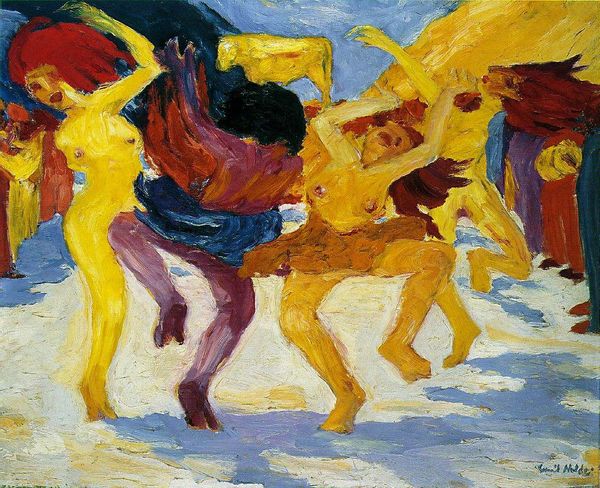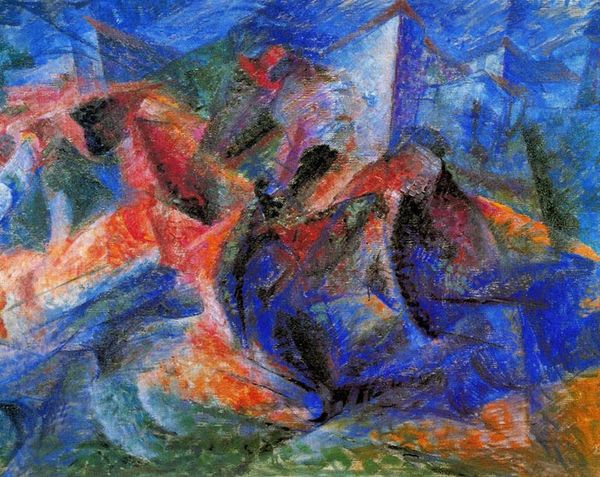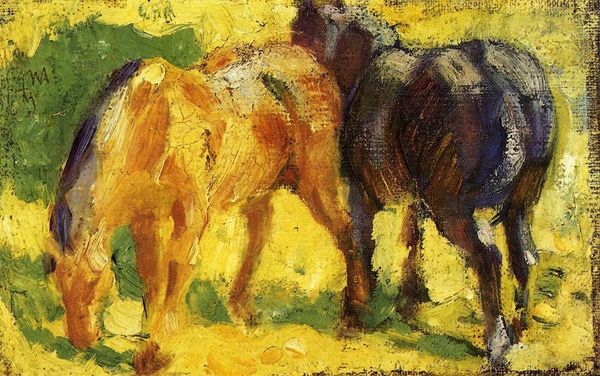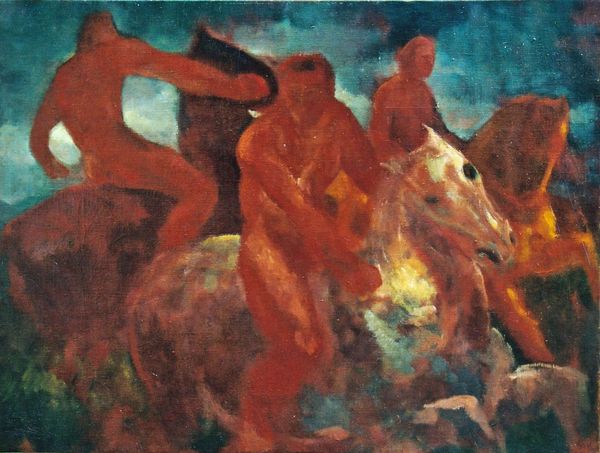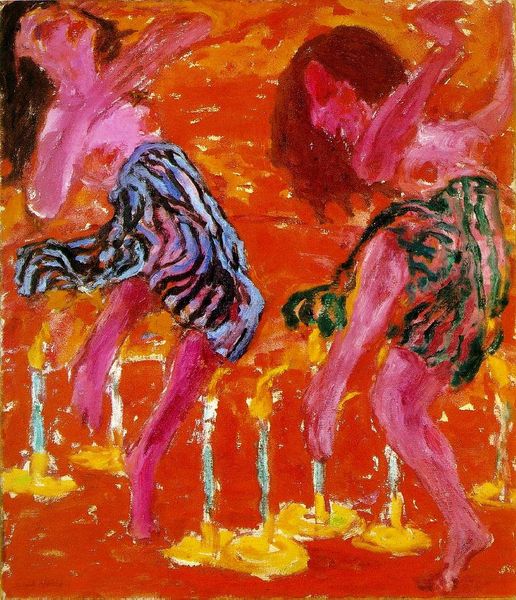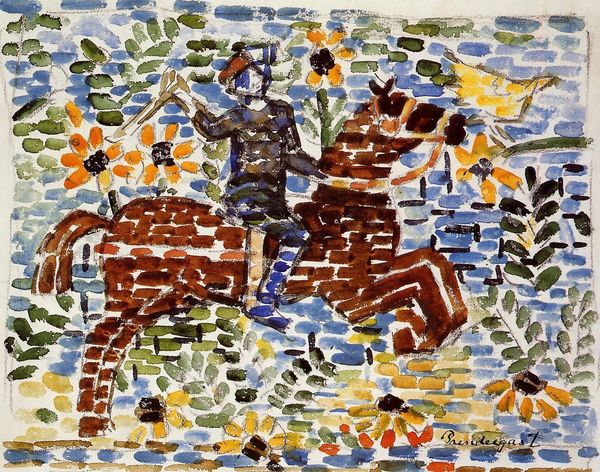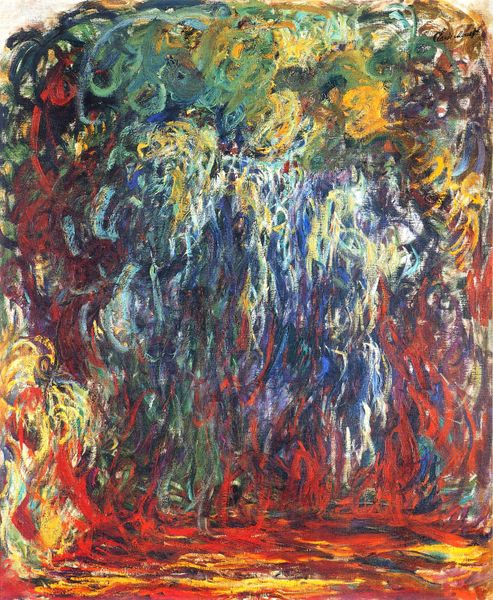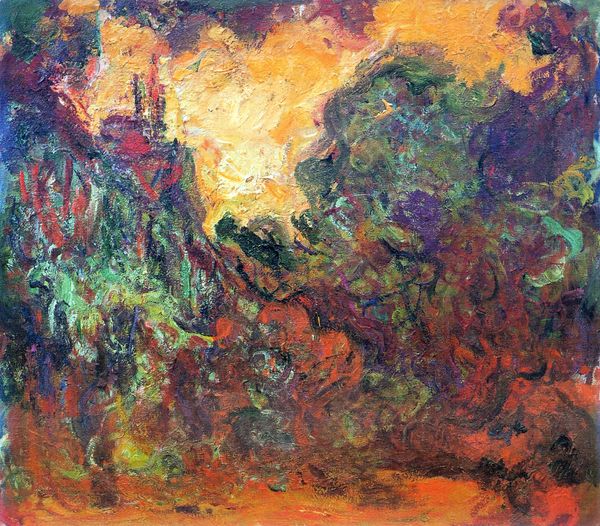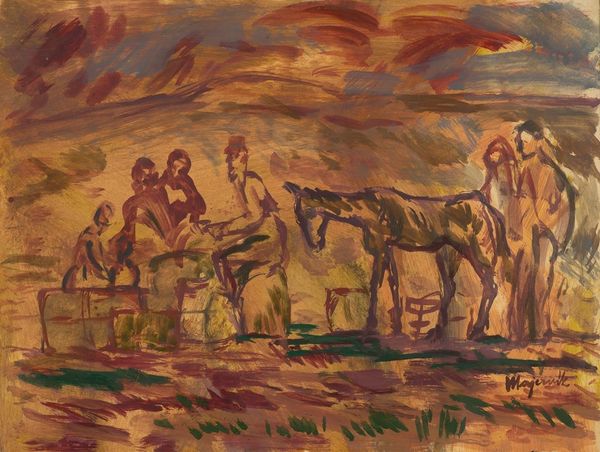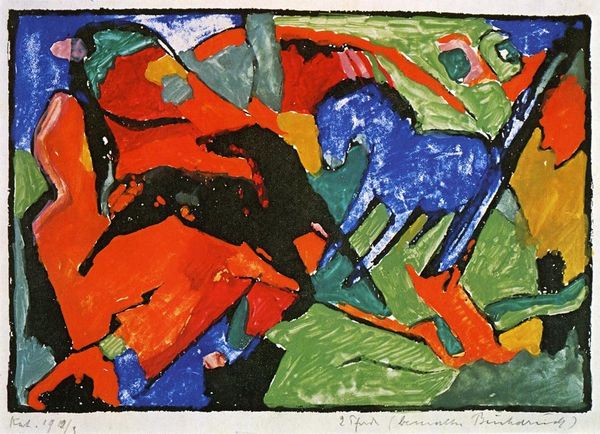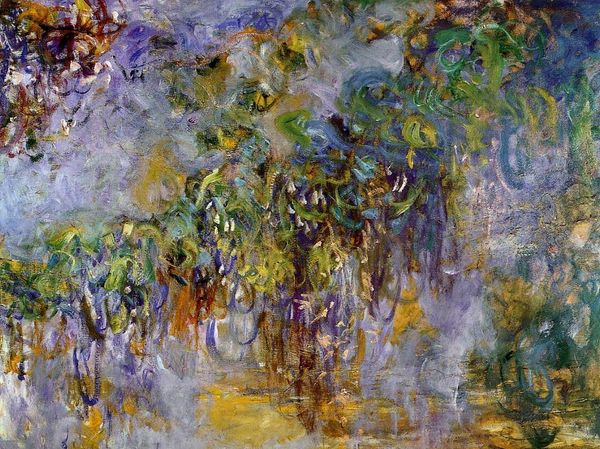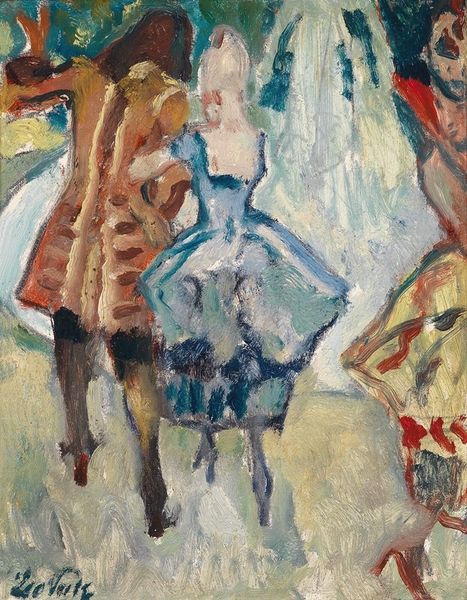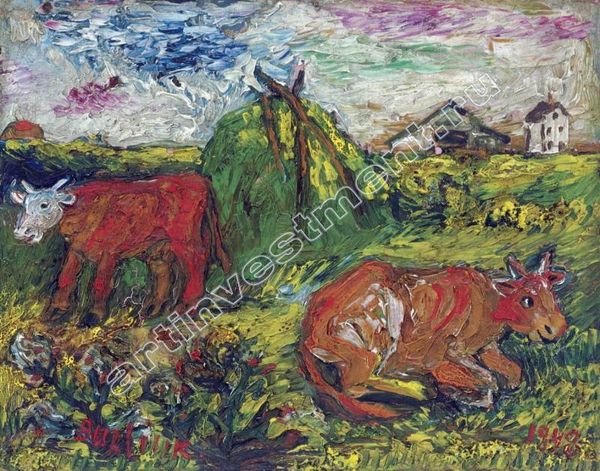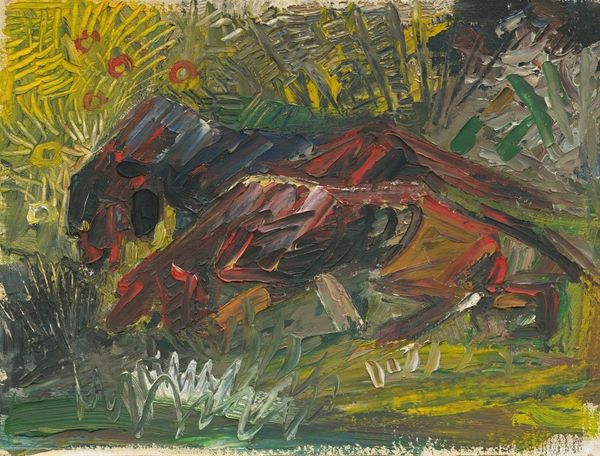
oil-paint
#
fauvism
#
fauvism
#
oil-paint
#
figuration
#
expressionism
#
genre-painting
#
expressionist
Copyright: Emil Nolde,Fair Use
Editor: This is Emil Nolde's "Wildly Dancing Children," done with oil paints. It has a palpable energy and rhythm, almost like I can hear the music they’re dancing to. What jumps out at you when you look at this work? Curator: The formal dynamism is striking. Note how Nolde orchestrates a chromatic scale of vivid, unmodulated colors, from the fiery reds and oranges in the figures to the cool greens and blues of the ground. The composition defies traditional perspective, flattening the space and prioritizing the sheer force of color. Editor: So the distortion of reality is intentional? Curator: Absolutely. Consider how Nolde applies paint. Short, deliberate strokes build a textured surface, disrupting smooth transitions and contour lines. The children are not rendered as accurate portrayals but as vehicles for exploring expressive color and form. How does this departure from naturalism impact your interpretation? Editor: I see what you mean. It's less about capturing reality and more about conveying raw emotion and energy. It's fascinating how the brushstrokes become as important as the subject itself. Curator: Precisely. The structural elements—the brushstrokes, color choices, and distorted forms—communicate meaning. Nolde explores the expressive potential inherent in the materials of painting. This allows for a rich interpretation focused on the materiality and formal components. Editor: That’s a fresh approach! I had focused on the feeling it evoked but now I see the skill in the execution and material choices too. Curator: By examining Nolde’s methods, our understanding is deepened and enlivened.
Comments
No comments
Be the first to comment and join the conversation on the ultimate creative platform.
